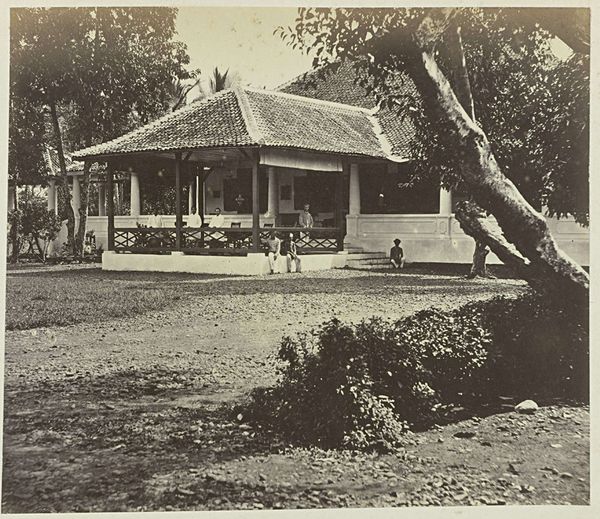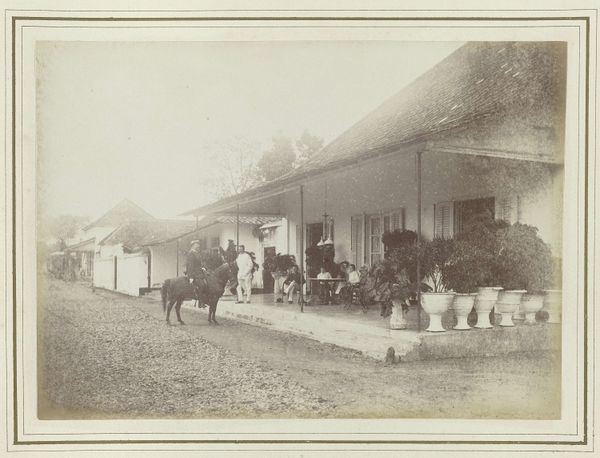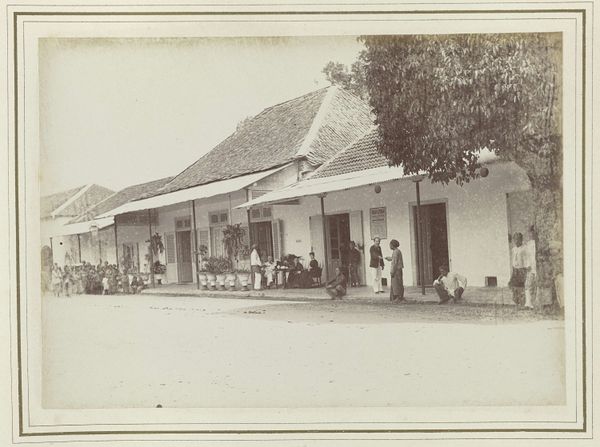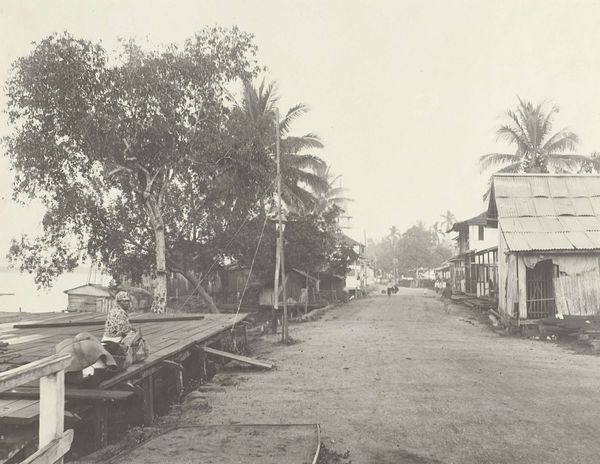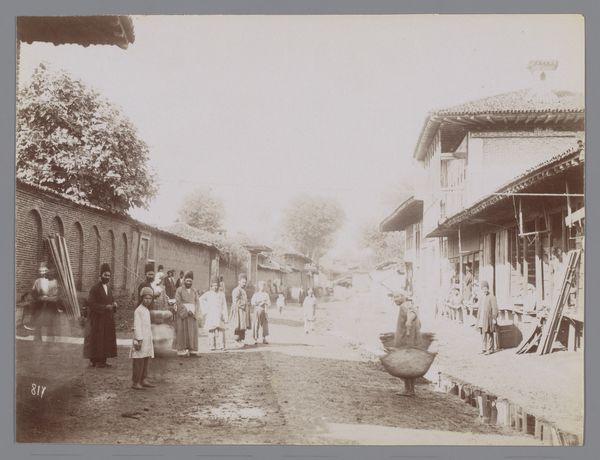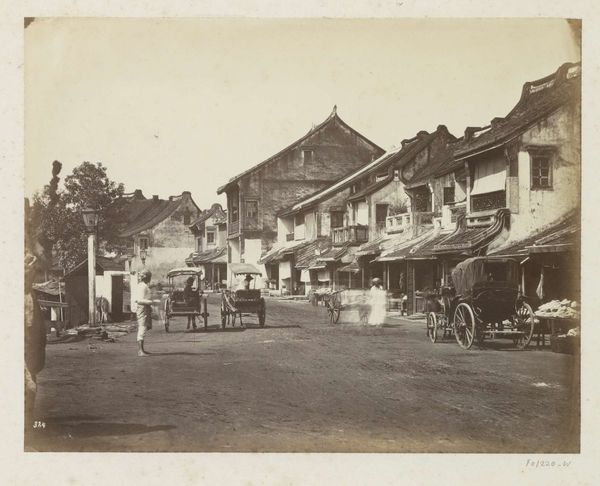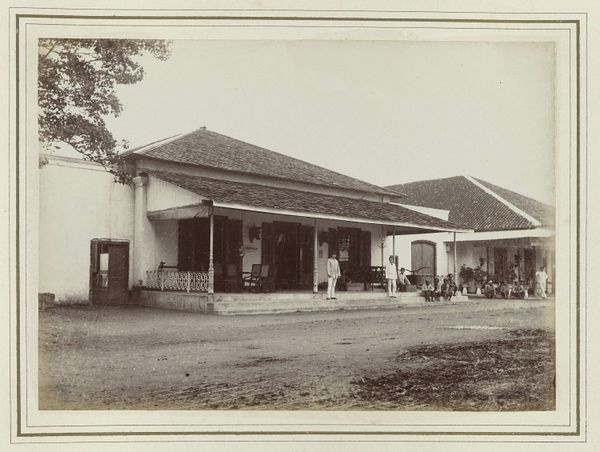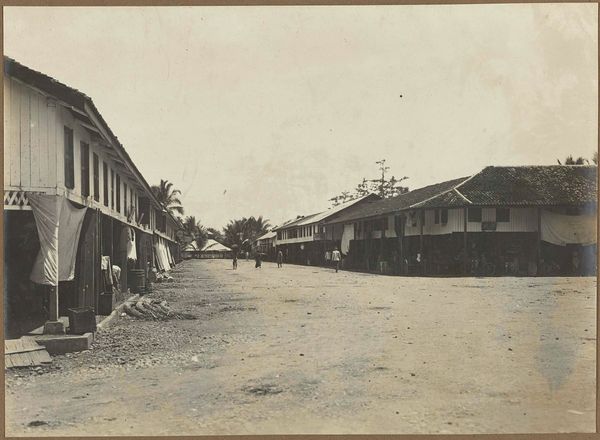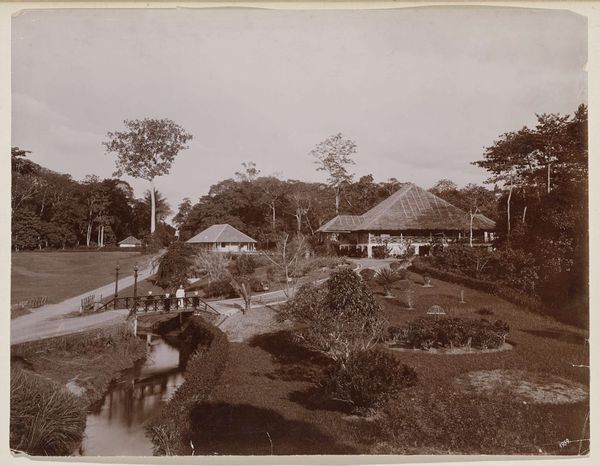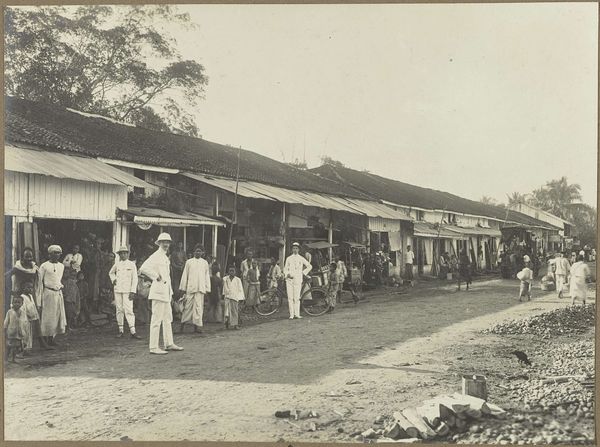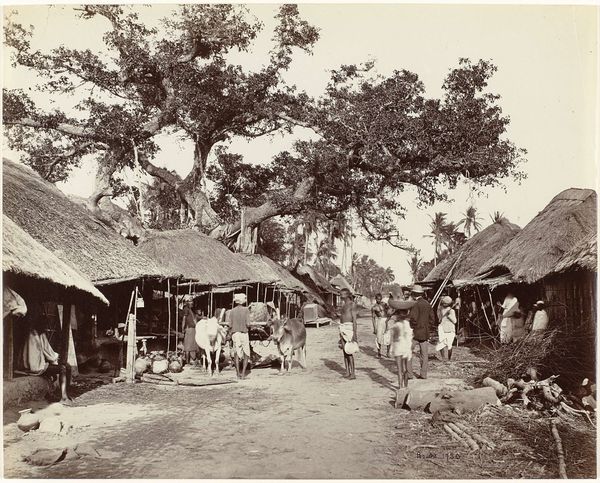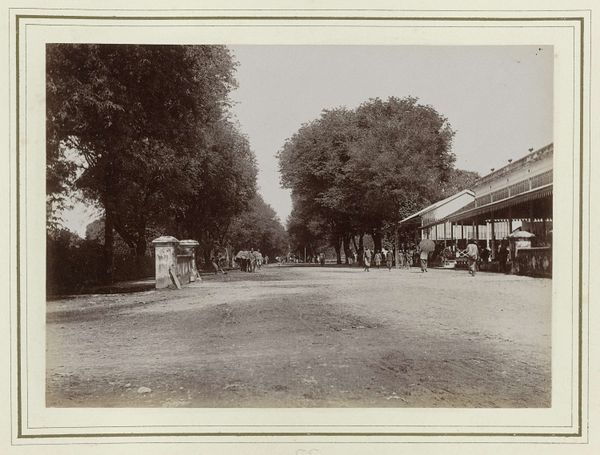
photography, site-specific
#
16_19th-century
#
dutch-golden-age
#
asian-art
#
landscape
#
historic architecture
#
traditional architecture
#
photography
#
historical photography
#
site-specific
#
monochrome photography
#
19th century
#
cityscape
#
monochrome
Dimensions: height 181 mm, width 235 mm
Copyright: Rijks Museum: Open Domain
Curator: This photographic print captures the "Tuin van Sociëteit De Harmonie, Batavia," created sometime between 1860 and 1880 by Woodbury & Page. Editor: My immediate sense is one of curated leisure. The monochrome palette lends a nostalgic, almost dreamlike quality to the meticulously arranged tables and potted plants. Curator: Indeed. "De Harmonie" was a social club in Batavia, now Jakarta, reflecting Dutch colonial society. This photograph presents a carefully constructed image of order and civility. Consider the way it emphasizes the European presence and control. Editor: And yet, the shadows cast by the mature trees, the implication of a tropical climate, disrupt this image of pure control. Don't you think this is where the photograph unsettles viewers? A tension between the colonial ideal and the inescapable realities of place. It forces you to examine themes of power, class, and privilege that underpinned such settings. Who was welcomed into this garden, and who was excluded? Curator: Exactly. We need to interrogate the power dynamics inherent in images like these, particularly as they contribute to a broader understanding of colonialism’s impact. This site-specific installation allows for such discussions. Editor: Even the composition reinforces that; it’s all about constructed views. This photographic staging says so much about what the colonizers wanted to project and to obscure about themselves, this specific locale, and about colonial enterprise. It presents not just the structures, but also the social hierarchies meticulously put in place. Curator: I completely agree. What appear to be idyllic social settings served as arenas for enforcing cultural norms. It's about revealing these encoded messages, which makes this photograph a critical document for examining Dutch colonial history in Indonesia. Editor: Thinking about this image in this context, through lines of identity and politics truly opens it up beyond a simple document to what the site attempts to present. Curator: It allows for broader dialogues concerning colonial history and social class constructs, and photographic manipulation of the time.
Comments
No comments
Be the first to comment and join the conversation on the ultimate creative platform.
